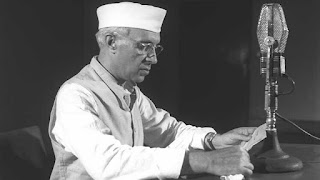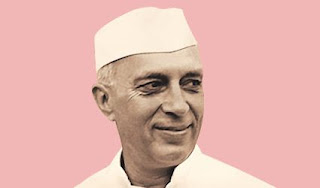‘I do not understand what is this culture that communalism is trying so desperately to preserve.’
Sep 24, 2017
Vedica Kant
“Communalism is forever paying its respect to culture. Perhaps it is ashamed of being seen in its true form. Like the donkey that wears a lion’s skin and lords over the animals in a jungle, communalism wraps itself in the garb of culture.”
These lines are very appropriate for the current socio-political climate in India. The right wing has tightly tied its agenda to the appearance of preserving some idealised examples of Hindu culture and identity. A recent example of this has come from RSS ideologue Dinanath Batra.
Batra, the former head of Vidya Bharati, the education wing of the RSS, heads the RSS-affiliated Shiksha Sanskriti Utthan Nyas (Trust for the Upliftment of Education and Culture). The Trust has made news for its response to a call for suggestions on reviewing NCERT (National Council of Educational Research and Training) books. The Nyas’s suggestions included removing English, Urdu and Arabic words, a couplet by Mirza Ghalib, references to the thoughts of Rabindranath Tagore, and extracts from the painter MF Husain’s autobiography.
The more things change...
Given this context, readers might be surprised to learn that the lines quoted above weren’t written in response to the present situation. In fact, they were composed by the writer Premchand. Premchand’s essay “Communalism and Culture” was written in 1934 and is a reminder that rising communal tension is not new in Indian politics. Indeed, communalism always played an especially important role in the politics of the United Provinces, where Premchand lived.
In his book, Hindu Nationalism and the Language of Politics in Late Colonial India, the historian William Gould argues that the language of Hindu nationalism had slowly seeped into the Congress by the 1930s and this furthered the alienation of the region’s important Muslim community. Given this background, Premchand’s essay is remarkable for the relevance it still holds today.
Premchand wrote:
“Hindus want to preserve their culture till the end of time, Muslims theirs. Both still think of their culture as untouched, forgetting that now there is neither a Hindu culture, nor a Muslim culture.”
When it comes to religion, Premchand argued, there are plenty of differences even within Hinduism and within. If there is a sect of Muslims which considers bowing to even the greatest of prophets infidelity, then there are sects in Hinduism who give religious scriptures no more importance that written gossip. If there is a tradition of idol worship in Hinduism, do we not also see elements of that in Islamic shrine worship?
Premchand argued that communal cultural evangelists focussed on issues like language, food, dress and art. On food, he wrote:
“If Muslims eat meat, then eighty per cent of Hindus eat meat too…Yes, Muslims sacrifice the cow and eat the meat. However, amongst Hindus too there are castes that eat cow’s meat, so much so that they even eat the meat of a carcass…Hindus are the only community in the world that consider cow meat inedible and unholy. So, should Hindus start waging a religious war with the entire world for this reason?”
Portending some of the post-Partition problems Pakistan contended with when it came to language, Premchand contended that there was no common language for either Hindus or Muslims. Their linguistic loyalty was determined solely by the region they lived in:
“A Bengali Muslim might not be able to able to speak or understand Urdu, as might be the case with a Bengali Hindu and Hindi. A Hindu in the Frontier Provinces will speak Pashto, just as a Muslim from the area would.”
Even in matters of dress, music, dance and painting Premchand could not find any deep divisions between Hindus and Muslims, causing him to write:
“Then I do not understand what is this culture that communalism is trying so desperately to preserve. In actuality, this call of ‘culture’ is a mere pretence. It is a chant used to pull the unknowing towards communalism, nothing else. The protectors of Hindu and Muslim culture are those who have no faith in themselves, their countrymen or in the truth… It is beyond their intellectual capability to think of an issue that can bring Hindus and Muslims together for the cause of a nation.”
...the more they remain the same
Eventually, Premchand was disparaging of both cultures – hardly surprising for a writer who was scathing about the implications of cultural decadence in his story Shatranj Ke Khiladi (The Chess Players) – and communal groups.
“This is an economic age and today only that policy will be successful which solves the public’s economic difficulties and through which superstition, this game being played in the name of religion, and the milking of the poor in the name of policy can be stamped out. ‘Culture’ is the addiction of the rich and carefree…
After all, what was in that culture for it to be protected? When the public was unconscious a spell of religion and culture was cast on it. As it gains consciousness it has started to notice that this culture was a thief that had robbed it in the form of kings, scholars and merchants. The public today is more concerned about the protection of its life, and this is more necessary than the protection of culture.
There is no reason for any endearment towards that old culture. And communalism, blind to these economic problems of the public, is working according to a programme that will ensure its continued relevance.”
Premchand strikes a hopeful note that despite the naked ambitions behind communalism, a more aware and awakened citizenry will recognise the games being played in the name of culture and religion. It was perhaps a rather too hopeful expectation. With the hindsight of history, we know that communal tensions in India only worsened in the coming decades, culminating in the Partition.
Even more distressing is the fact that, seventy years after the Partition, not only is communalism in India working exactly as it was when Premchand was writing, but also that hopes of citizens shaking off the spell of communalism seem to have receded even further.
https://scroll.in/article/851660/premchands-1934-essay-on-communalism-and-culture-is-eerily-relevant-in-the-india-of-2017, 1 October 2017.












